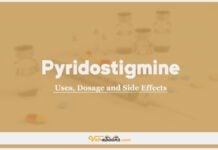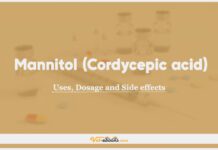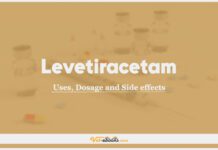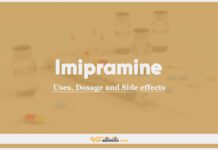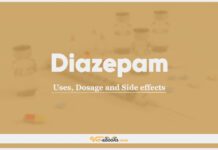Neostigmine In Dogs & Cats: Uses, Dosage and Side Effects
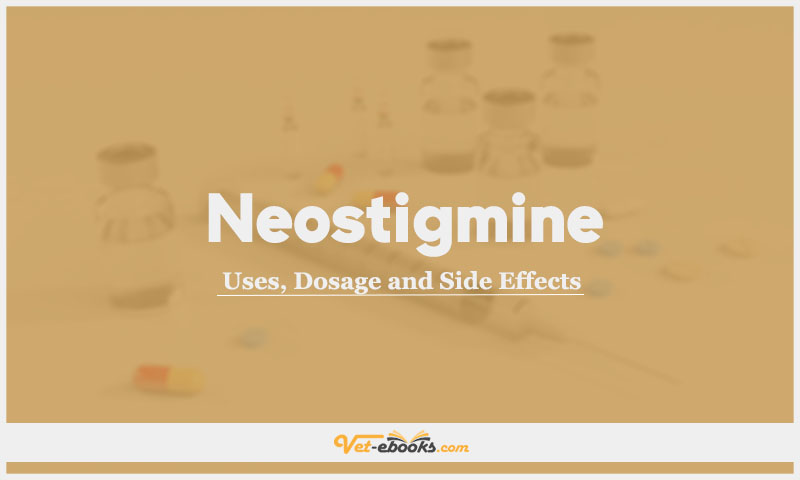
Overview
- Prolongs the action of acetylcholine at the neuromuscular junction.
- With low CNS penetration due to its polar structure.
- In comparison with edrophonium, it has a slower onset but a longer duration of action of approximately 30 minutes to 2 hours.
Uses of Neostigmine
- Treatment of acute myasthenic crises if oral dosing with pyridostigmine is not possible.
- When the availability of edrophonium is restricted, can be used as an alternative diagnostic test for myasthenia gravis.
- Also used to antagonize non-depolarizing neuromuscular blocking agents.
Dose of Neostigmine in Dogs and Cats
Dogs:
1- Diagnosis of myasthenia gravis:
- 0.02 mg/kg i.v of neostigmine (in combination with glycopyrrolate).
- If there is no response within 4 hours and no apparent side effects, then the test can
be repeated using 0.03 mg/kg.
2- Treatment of myasthenia gravis if pyridostigmine is not available or oral medication cannot be given due to regurgitation: 0.04 mg/kg i.m, s.c. q6h.
3- Myasthenic crisis:
- 0.01–0.1 mg/kg i.v., i.m., s.c., interval dependent upon duration of response.
- For longer-term use 0.1–0.25 mg/kg p.o. q4h (total daily dose not to exceed 2 mg/kg).
4- Antagonism of non-depolarizing neuromuscular blocking agents:
- neostigmine (0.05 mg/kg) is mixed with glycopyrronium (0.01 mg/kg) and injected i.v. over 2 min, once signs of spontaneous recovery from ‘block’, e.g. diaphragmatic
‘twitching’, are present. - Continued ventilatory support should be provided until full respiratory muscle activity is restored.
- If glycopyrronium is unavailable, atropine (0.04 mg/kg) is given i.v., followed by neostigmine (0.05 mg/kg) as soon as heart rate rises.
Cats:
1- Myasthenic crisis:
- use not reported in cats but extrapolation from dogs seems reasonable.
2- Antagonism of non-depolarizing neuromuscular blocking agents:
- doses as for dogs.
Drug Dosage Calculator
You Should Give:
Side Effects of Neostigmine in Dogs and Cats
- Nausea, vomiting, increased salivation, diarrhoea, muscle fasciculations, and paralysis.
- Severe bradyarrhythmias can occur if neostigmine is used without atropine.
- A ‘cholinergic crisis,’ characterized by various symptoms such as lacrimation, defecation, urination, miosis, nystagmus, bradycardia, hypotension, muscle cramps, weakness, paralysis, respiratory issues, bronchial secretion, and CNS side effects like ataxia, seizures, and coma.
Contraindications of Neostigmine in Dogs and Cats
- Contraindicated in mechanical GI or urinary tract obstruction and in peritonitis.
Some Notes:
- Certain drugs with neuromuscular blocking activity, such as aminoglycosides, clindamycin, and halogenated inhalational anaesthetics, can counteract the effects of neostigmine.
- Medications that exacerbate myasthenia gravis can reduce the effectiveness of neostigmine treatment. These include quinine, related compounds, and beta-blockers.
- Concurrent use of neostigmine and beta-blockers may lead to bradycardia.
- Neostigmine and other anticholinesterases can prolong and enhance the clinical effect of suxamethonium, a muscle relaxant. However, their combined use is not recommended.
- Neostigmine antagonizes the effects of non-depolarizing muscle relaxants, and antimuscarinic drugs like atropine can counteract the muscarinic effects of neostigmine.
Tip
Do You Want To Increase Your Veterinary Knowledge and Practical Skills?
You Can Now Browse and Download +3000 Books For Veterinary Professionals & Students Online.
Download Veterinary Books



